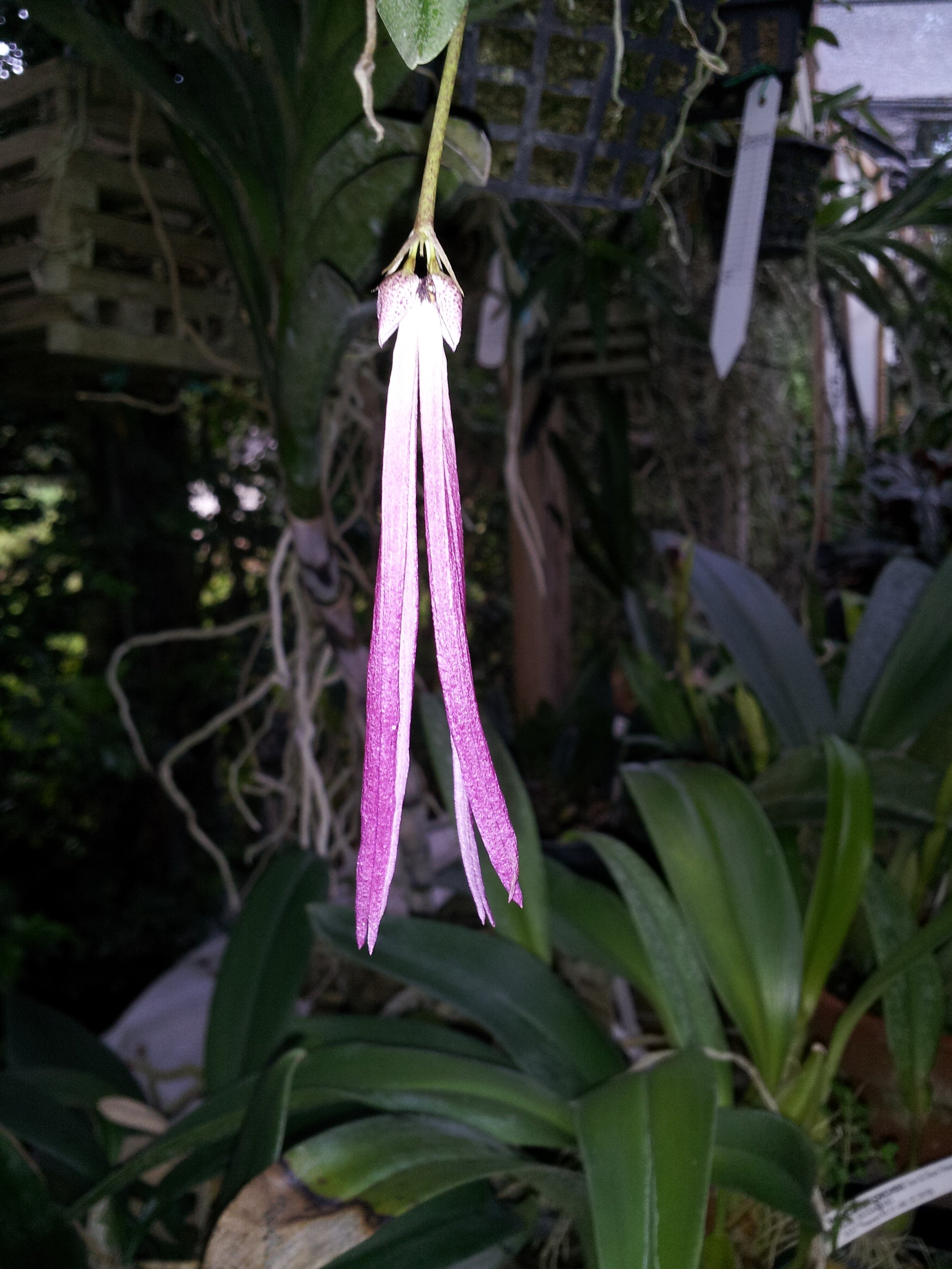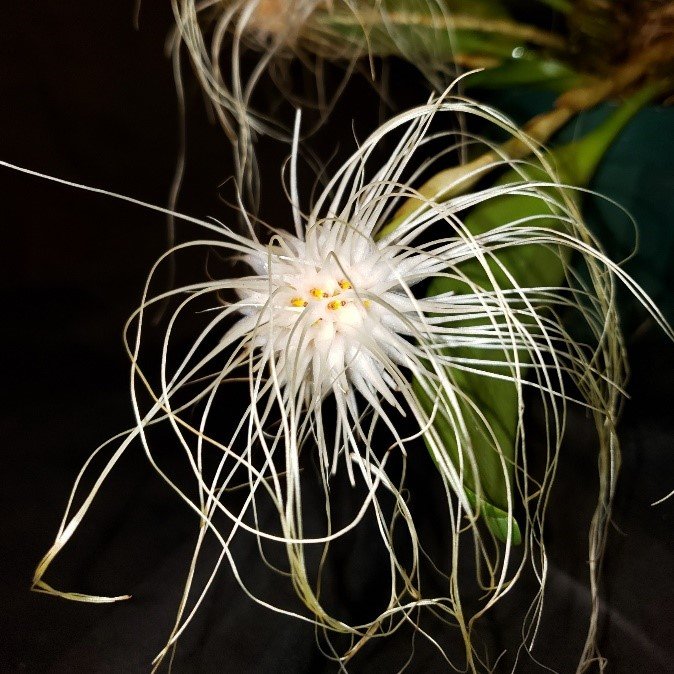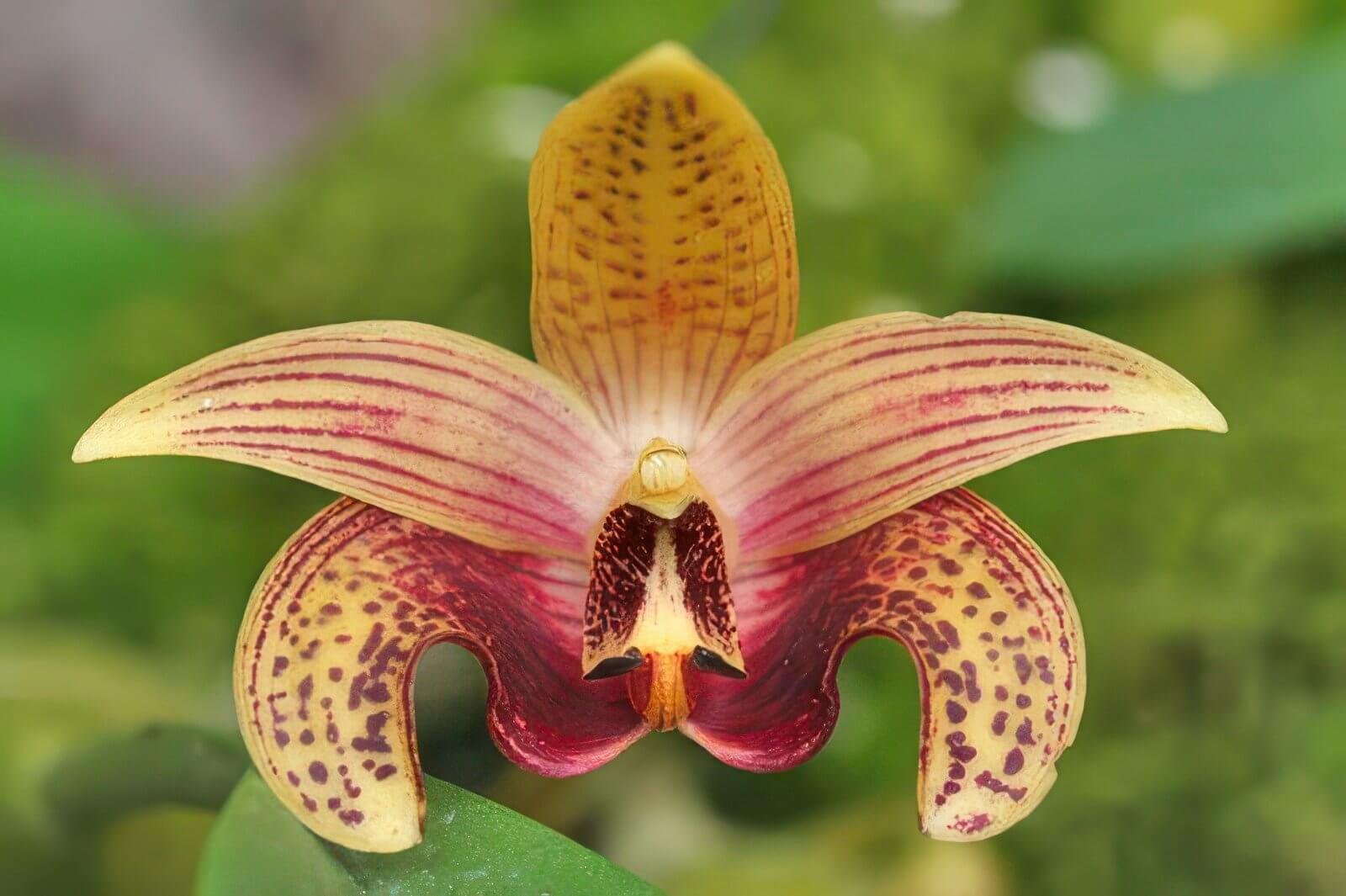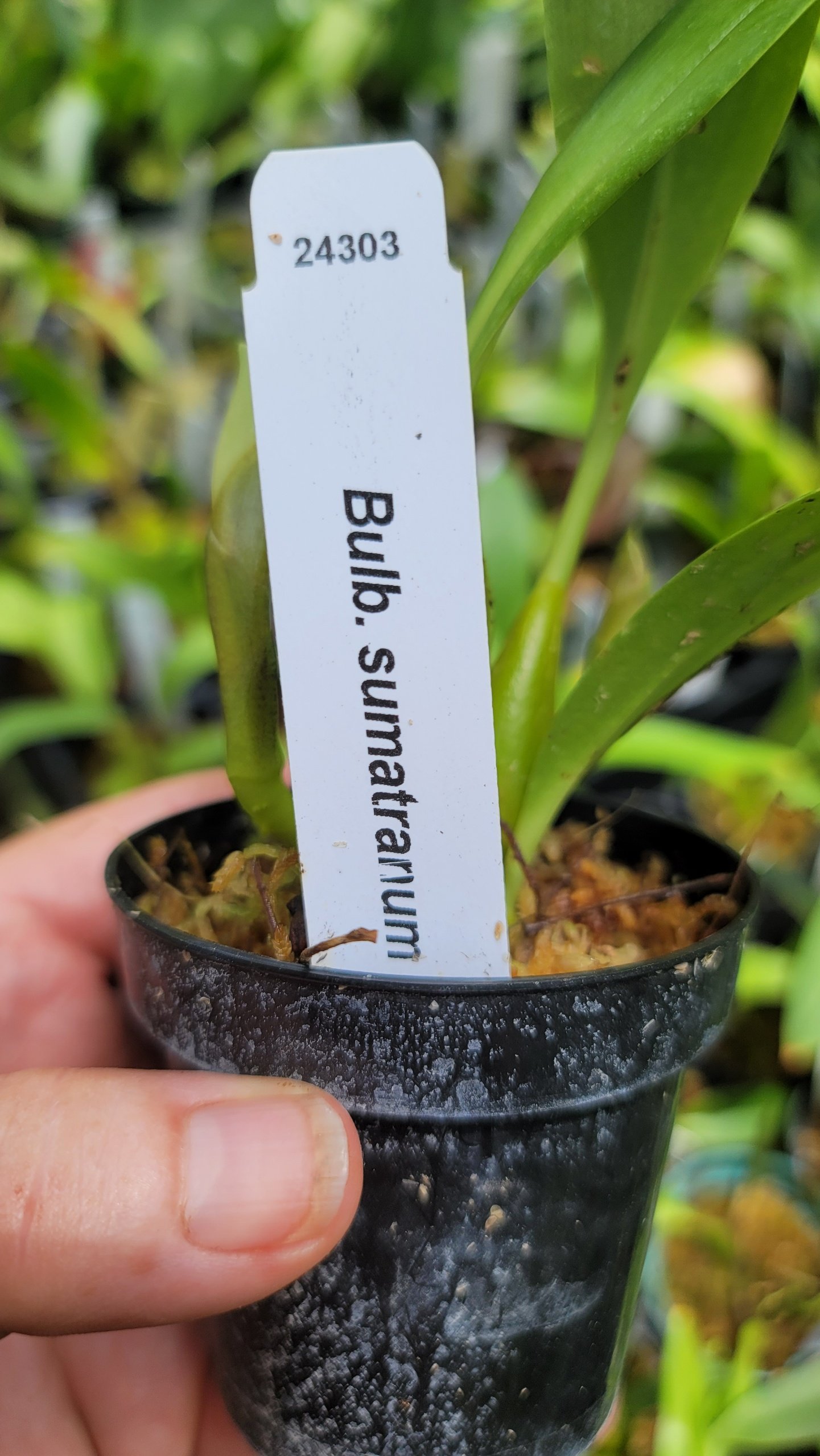 Image 1 of 3
Image 1 of 3

 Image 2 of 3
Image 2 of 3

 Image 3 of 3
Image 3 of 3




Bulbophyllum plumatum
The species:
Bulbophyllum plumatum is a miniature epiphytic orchid species native to Southeast Asia, primarily found in the Philippines (notably Luzon and Mindanao) and parts of Malaysia. The name “plumatum” comes from the Latin word for “feathered,” reflecting the distinctive, feather-like appearance of its floral appendages. Our 2-inch pots are Near Blooming Size (NBS). 3-inch pots are Blooming Size. 4-inch pots are well established mature plants.
Appearance:
Plant Structure: This is a small, creeping epiphyte with closely spaced pseudobulbs, each about 1-2 cm long, topped by a single, leathery leaf (typically 5-10 cm long and 1-2 cm wide). The rhizome spreads horizontally, making it well-suited for mounting.
Flowers: The blooms are the star of the show. Each inflorescence emerges from the base of a pseudobulb and forms a small, umbrella-like cluster (umbel) of 3-7 flowers. Individual flowers are tiny—about 1-2 cm wide—but striking:
Appendages: The standout feature is the long, feathery, structures extending from the sepals, giving the flower a wispy, feathered look. These can be up to 4 in (10 cm) long, adding dramatic flair.
Lip: The tiny lip is mobile and hinged, often purple or reddish, designed to attract pollinators through slight vibrations in the breeze.
Fragrance: Reports vary, but it’s typically mild or faintly sweet—not one of the foul-smelling Bulbophyllum species known for mimicking carrion.
Summary:
Bulbophyllum plumatum is prized by collectors for its exotic appearance and manageable size. Its delicate, feathery blooms make it a standout in Bulbophyllum displays or species-focused collections.
The species:
Bulbophyllum plumatum is a miniature epiphytic orchid species native to Southeast Asia, primarily found in the Philippines (notably Luzon and Mindanao) and parts of Malaysia. The name “plumatum” comes from the Latin word for “feathered,” reflecting the distinctive, feather-like appearance of its floral appendages. Our 2-inch pots are Near Blooming Size (NBS). 3-inch pots are Blooming Size. 4-inch pots are well established mature plants.
Appearance:
Plant Structure: This is a small, creeping epiphyte with closely spaced pseudobulbs, each about 1-2 cm long, topped by a single, leathery leaf (typically 5-10 cm long and 1-2 cm wide). The rhizome spreads horizontally, making it well-suited for mounting.
Flowers: The blooms are the star of the show. Each inflorescence emerges from the base of a pseudobulb and forms a small, umbrella-like cluster (umbel) of 3-7 flowers. Individual flowers are tiny—about 1-2 cm wide—but striking:
Appendages: The standout feature is the long, feathery, structures extending from the sepals, giving the flower a wispy, feathered look. These can be up to 4 in (10 cm) long, adding dramatic flair.
Lip: The tiny lip is mobile and hinged, often purple or reddish, designed to attract pollinators through slight vibrations in the breeze.
Fragrance: Reports vary, but it’s typically mild or faintly sweet—not one of the foul-smelling Bulbophyllum species known for mimicking carrion.
Summary:
Bulbophyllum plumatum is prized by collectors for its exotic appearance and manageable size. Its delicate, feathery blooms make it a standout in Bulbophyllum displays or species-focused collections.
The species:
Bulbophyllum plumatum is a miniature epiphytic orchid species native to Southeast Asia, primarily found in the Philippines (notably Luzon and Mindanao) and parts of Malaysia. The name “plumatum” comes from the Latin word for “feathered,” reflecting the distinctive, feather-like appearance of its floral appendages. Our 2-inch pots are Near Blooming Size (NBS). 3-inch pots are Blooming Size. 4-inch pots are well established mature plants.
Appearance:
Plant Structure: This is a small, creeping epiphyte with closely spaced pseudobulbs, each about 1-2 cm long, topped by a single, leathery leaf (typically 5-10 cm long and 1-2 cm wide). The rhizome spreads horizontally, making it well-suited for mounting.
Flowers: The blooms are the star of the show. Each inflorescence emerges from the base of a pseudobulb and forms a small, umbrella-like cluster (umbel) of 3-7 flowers. Individual flowers are tiny—about 1-2 cm wide—but striking:
Appendages: The standout feature is the long, feathery, structures extending from the sepals, giving the flower a wispy, feathered look. These can be up to 4 in (10 cm) long, adding dramatic flair.
Lip: The tiny lip is mobile and hinged, often purple or reddish, designed to attract pollinators through slight vibrations in the breeze.
Fragrance: Reports vary, but it’s typically mild or faintly sweet—not one of the foul-smelling Bulbophyllum species known for mimicking carrion.
Summary:
Bulbophyllum plumatum is prized by collectors for its exotic appearance and manageable size. Its delicate, feathery blooms make it a standout in Bulbophyllum displays or species-focused collections.
Growing Conditions
Bulbophyllum plumatum is a rewarding species for growers who can replicate its tropical habitat:
Light: Low to moderate, indirect light (800-2,000 foot-candles). It prefers shade or filtered sunlight, avoiding direct burn.
Temperature: Warm to intermediate, 65°F-85°F (18°C-29°C) during the day, with a slight drop at night. It’s sensitive to cold below 55°F (13°C).
Humidity: High, 70%-90%. It thrives in terrariums, greenhouses, or with regular misting.
Watering: Keep the medium (e.g., sphagnum moss, bark, or mounted on cork) consistently moist but not soggy. Good air circulation prevents rot.
Air Movement: Essential to mimic its breezy forest home and keep the fine roots healthy.
Fertilizer: Light feeding (e.g., 1/4 strength orchid fertilizer) every 2-4 weeks during the growing season.
Care Tips
Mounting: It excels on mounts (e.g., cork, tree fern) where its creeping habit can spread naturally. Pots work too, but ensure excellent drainage.
Avoid Disturbance: Repot or remount sparingly, as it dislikes root disruption.
Watch the Roots: Fine and delicate, they need moisture but can rot if overwatered or poorly ventilated.









